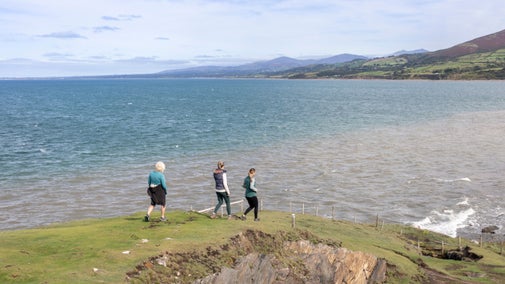Carne Beach to Nare Head circular walk
Cornwall
This walk takes in a wooded valley and offers views from the tip of Nare Head and from the South West Coast Path. Things to look out for on the way include a Bronze Age barrow, an Iron Age earthwork and a Second World War decoy bunker.
Near to
Carne and PendowerStart point
Carne Beach car park. Grid ref: SW906383. Postcode: TR2 5PFTrail information
*Range of terrain with some steep sections. For further details, please see Terrain section.
**Trail contains steps, stiles and paths along cliff edges. For further details, please see Access section. Some of the slopes and paths can get slippery and muddy, especially near Mallet's Cottage, so please take care.
More near here
Trelissick to Roundwood Quay secluded stroll
Wander tree-lined riverside paths, peeping through twisting oak branches to glimpse your destination of Roundwood – home to an Iron Age fort and 18th-century quay.

The Dodman long loop trail
Explore a 3–mile circular walk at Dodman Point, the highest headland on Cornwall's south coast and see far-reaching views and wildlife from its peak.

Get in touch
Our partners

We’ve partnered with Cotswold Outdoor to help everyone make the most of their time outdoors in the places we care for.
You might also be interested in
Walking
Explore some of the finest landscapes in our care on coastal paths, accessible trails, woodland walks and everything in between. Find the best places to walk near you.

Top coastal walks
Explore some of the UK's most famous natural landmarks on a coastal walk. With a variety of walking trails offering clifftop views, golden sands and local wildlife, there's a walk for everyone.

Explore the beaches at Carne and Pendower
Accessible all year round, the sandy beaches at Carne and Pendower offer seaside fun, coastal walks with sweeping views, and the chance to explore disused military bunkers.

Staying safe at National Trust places
The special places in National Trust care sometimes come with a few risks for visitors, be it coastline or countryside. Find out how to keep safe throughout your visits.

Cotswold Outdoor: our exclusive walking partner
Learn about the National Trust’s ongoing partnership with Cotswold Outdoor. Find out how they help us care for precious places and the exclusive discount available for National Trust supporters.

Walking in Cornwall
From strolls that reward you with stunning views of the South West coast to gentle inland meanders, these are some of the best walks in Cornwall.

